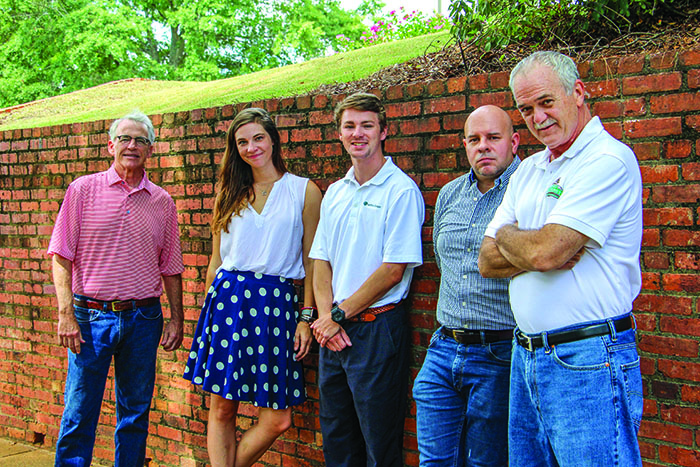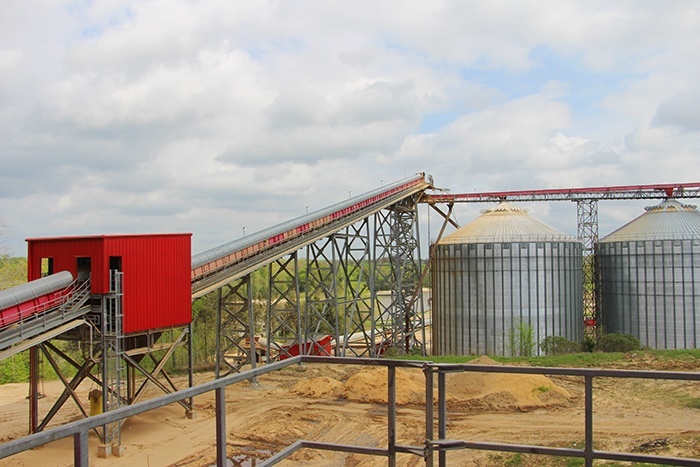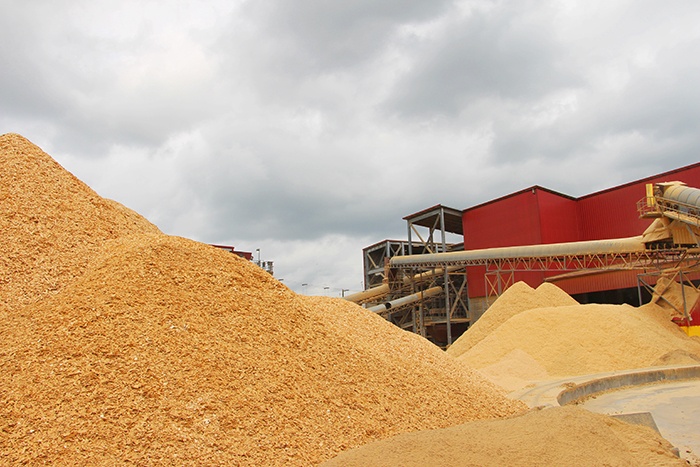Inside this issue
From the Editors
Cover Story
In the News
- Enviva Reveals 2020 Implementation Plans
- ENCE Teams Up With SENER Again
- Drax Reaches Milestone Mark
- Drax Donates $30,000 Toward Relief Efforts
- PRODESA Will Supply Plants To Belarus
- Combilift Steps Up With Combi-Ventilate
- Northwest Deal Brings Parties To The Table
- Sun Bio Pulls Out Of Pulp Mill Project
- OSU’s Waring Shares Wallenberg Prize
Wood Bio Part Two: Projects, Air Emissions
This is part two of a three part series on the coverage of the Wood Bioenergy Conference & Expo held March 10-11 at the Omni Hotel at CNN Center in Atlanta. Part one appeared in the April issue. Part two here reviews the presentations of speakers in project development, air emissions technology and process maintenance.
Conveyor Considerations
Choosing The Right Conveyors For Biomass
Raw Materials Processing
The following companies provided editorial profiles to complement their advertisements throughout this issue:
- Bandit Industries
- Biomass Engineering & Equipment
- CW Mill Equipment
- Fulghum Industries
- Morbark
- Peterson Pacific
- Precision Husky
- Progress Industries
- Rawlings
- Vecoplan
- Vermeer
Product News
- Sugimat Will Supply Biomass Steam Boiler
- New Loggers-Truckers App Follows Loads
- Husqvarna Appoints President of North America Division
Find Us On Social
From the Editors
Years ago when it was introduced, the Obama Administration’s Clean Power Plan (CPP) from the Environmental Protection Agency (EPA) was quickly challenged in court on several fronts, the biggest being that the plan had over-reached by attempting to regulate energy policy through the Clean Air Act as opposed to sticking with environmental issues.
Yet now, with the Affordable Clean Energy (ACE) Rule from the Trump Administration being finalized to replace the CPP, rule-makers at the EPA have again wandered off course, this time ignoring the benefits of biomass in favor of emphasizing coal technology improvements in the pursuit of lower greenhouse gas emissions.
Scott Osbourn, principal with Trinity Consultants, covered the impact of the new rule during a presentation at the Wood Bioenergy Conference & Expo in Atlanta in March.
From Left: Rich Donnell, Editor-in-Chief; Jessica Johnson, Senior Associate Editor; Patrick Dunning, Associate Editor; David Abbott, Senior Associate Editor; Dan Shell, Senior Editor
The biggest difference between the two plans when it comes to biomass, he said, is the CPP only considers “inside the fence” systems and technologies that can be improved upon at a given facility, not any benefits that can be gained by using alternate fuel sources or closing facilities to shift capacity and feedstock.
A key term EPA uses is the best system of emission reduction (BSER), which gives operators guidance on how to best meet emissions reduction goals. However, benefits derived from biomass conversions or co-firing such as sustainability and carbon sequestration from replanting aren’t even considered.
Cover Story
Article by Jessica Johnson, Senior Associate Editor, Wood Bioenergy
ALICEVILLE, Alabama – In late 2018, Pinnacle Renewable Energy announced the purchase of the majority of The Westervelt Co.’s wood pellet production facility in Aliceville, Alabama, while also entering into a long-term partnership agreement with Westervelt. For Pinnacle it represented a continuation of its focus on building partnerships with wood products companies who operate sawmills. Westervelt had long been known in the region for its high production sawmill and vast timberland holdings, when it built and started up a high production wood pellet mill at Aliceville in 2013.
Aliceville has four dry storage silos with capacities of 9,000 tons each.
Like other Pinnacle pellet plants, Aliceville’s raw material intake is dominated by sawmill residuals.
Last year, Pinnacle and Westervelt deepened their relationship and added Two Rivers Lumber into the partnership. The group announced they would build a greenfield wood pellet mill in Demopolis, Alabama, adjacent the new Two Rivers Lumber sawmill. Under the latest partnership agreement, Pinnacle owns 70% of the existing Aliceville and planned Demopolis facilities, while Westervelt retains 20%, and Two Rivers Lumber owns 10%.
Want more content?
Wood Bioenergy is published and delivered 6 times per year tosubscribers worldwide. Readership includes corporate executives, mill ownership, mill management, logging contractors and equity venture interests. Wood Bioenergy is FREE to qualified readers.
Latest News
UK Government Signs Contract With Drax
UK Government Signs Contract With DraxDrax confirms it has signed a contract with the UK Government for a low-carbon dispatchable CfD (Contract for Difference) agreement to cover all four biomass units at Drax Power Station over the period April 2027 to March 2031....
Biomass Plant Coming To South Carolina
Biomass Plant Coming To South CarolinaStartup company Carolina Renewable Products recently announced a new biofuel plant to be located near Orangeburg, SC. The company’s $280 million investment will create 155 new jobs. The company plans to convert sustainable woody...
Logger Co-op Launches Wisconsin Chip Mill
Logger Co-op Launches Wisconsin Chip Mill A precedent-setting milestone was marked in Tilleda, Wis., with the launch of the United States’ first chip mill owned and operated by a logger cooperative—a major step forward for collaboration and sustainability in the...
Subscribe to Our Newsletter
Wood Bioenergy News Online hits the inboxes of subscribers in the wood-to-energy sectors.
Subscribe/Renew
Wood Bioenergy is published and delivered worldwide 6 times per year. Free to qualified readers in the U.S. Subscribers outside the U.S. are asked to pay a small fee.
Advertise
Complete the online form so we can direct you to the appropriate Sales Representative.




